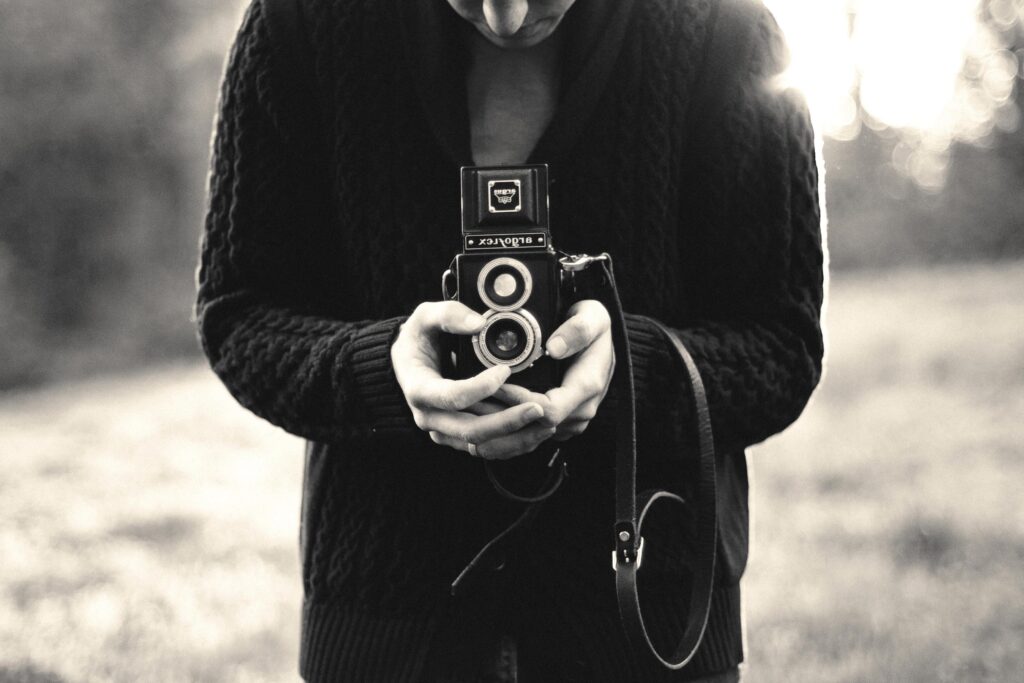In a world captivated by the relentless march of technology and the fast pace of contemporary life, nostalgia has become a powerful muse, inspiring artists and creators to delve into the past for a fresh perspective. Among these echoes of yesteryear, “Vintage Flash” emerges as a striking celebration of retro aesthetics, merging the charm of bygone eras with modern sensibilities. This article takes you on a journey through the allure of Vintage Flash, exploring its roots, its impact on contemporary culture, and how it invites us to appreciate the artistry of history. Whether it’s fashion, design, or digital art, join us as we unpack what makes this revival not just a trend but a deeply resonant movement that bridges generations and keeps the spirit of the past alive in vibrant, unexpected ways.
Exploring the Allure of Vintage Flash Photography
The charm of photography has always been closely tied to its history, and vintage flash photography captures this essence beautifully. This style evokes a sense of nostalgia, reminding us of a time when capturing moments required skill, patience, and a touch of creativity. The distinct look produced by older flash units—often giving images a stark contrast and dramatic quality—adds to the allure, allowing photographers to explore the art form in unique ways.
There are several key aspects that contribute to the fascination with vintage flash photography:
- Authenticity: Using vintage equipment provides a genuine experience, connecting photographers to the roots of their craft.
- Character: The imperfections in vintage images, such as light leaks or grain, often create a more compelling narrative than modern techniques.
- Learning Experience: Working with older technology hones skills in exposure and composition, making each shot feel more intentional.
- Community: The resurgence of interest in vintage photography has cultivated a vibrant community of enthusiasts sharing tips, techniques, and inspiration.
| Vintage Flash Models | Key Features |
|---|---|
| Vivitar 283 | Versatile power settings, durable build |
| Sunpak 422D | Stylish design, swivel head for bounce |
| Metz 45 CT-4 | High guide number, excellent for portraits |
Essential Techniques for Capturing Timeless Moments
Capturing moments that feel both nostalgic and unique requires finesse and an eye for detail. To enhance your photography, consider these essential techniques:
- Embrace Natural Light: Utilize golden hour lighting to cast warm tones and soft shadows, enhancing the vintage feel of your images.
- Play with Composition: Experiment with different angles and framing to create dynamic scenes that tell a story.
- Incorporate Props: Vintage items like old books, lace fabrics, or classic vehicles can infuse your shots with character and a sense of history.
In addition to those techniques, consider applying post-processing strategies that evoke the essence of the past. Adopting a classic color palette can significantly alter the mood of your photos:
| Color Tonality | Effect |
|---|---|
| Sepia | Creates warmth and nostalgia, reminiscent of old photographs. |
| Black & White | Focuses on contrasts and textures, adding timeless elegance. |
| Pastel Hues | Softens the image, delivering a dreamy and vintage-inspired look. |
Choosing the Right Equipment for Vintage Flash Aesthetics
To achieve authentic vintage flash aesthetics, it’s crucial to select equipment that evokes the charm and quirks of bygone eras. The right camera model can make all the difference, and here are some options that have proven to capture that timeless essence:
- Rangefinders: Cameras like the Leica M series bring a classic feel, allowing for precise control and that sought-after shallow depth of field.
- Medium Format Film Cameras: The Hasselblad and Rolleiflex are iconic choices that produce larger negatives for rich detail and atmospheric textures.
- 35mm Film Cameras: Models such as the Nikon FM2 and Canon AE-1 are affordable and great for those looking to explore different film stocks.
In addition to the camera, the type of flash used plays a significant role in achieving that vintage look. Consider the following options, which can enhance your work considerably:
| Flash Type | Characteristics |
|---|---|
| Allen Flash | Gives a soft, diffused light that mimics the natural sunlight of the mid-20th century. |
| Speedlite | Compact and versatile, perfect for on-the-go shoots while still providing a vintage vibe. |
| Studio Flash | Ideal for controlled environments, allowing for dramatic shadows and highlights reminiscent of vintage portrait photography. |
The Role of Lighting in Creating Vintage Flash Effects
In the world of photography, the delicate interplay of light is essential for evoking emotion and nostalgia, especially when aiming for that classic vintage flash aesthetic. To achieve the desired effect, you can experiment with different lighting sources, including natural light, flash units, and continuous lights. As you work, consider these key elements that can transform your images into timeless pieces:
- Soft lighting: Use diffusion materials or softboxes to mimic the gentle light found in old photographs.
- Directional light: Position lights at varying angles to create depth and enhance shadows, giving your images a more authentic feel.
- Colored gels: Introduce warm or sepia-toned filters to emulate aged film while adding a personal touch to your shots.
Additionally, incorporating vintage techniques with modern technology can further amplify the nostalgic charm. One effective approach is to utilize a combination of hard and soft lights to produce unique flash effects. The following table highlights how different light sources contribute to distinct vintage styles:
| Light Source | Effect | Best For |
|---|---|---|
| Natural Light | Warm, soft shadows | Portraits, outdoor scenes |
| Flash with Softbox | Even illumination | Product photography |
| Hard Flash | Dramatic highlights | Fashion shoots, high contrast effects |
By carefully selecting your lighting techniques and understanding their impact, you can skillfully evoke the magic of yesteryear, turning each shot into a window to the past with a modern twist.
Preserving Vintage Flash Prints for Longevity
To ensure the longevity of your vintage flash prints, it is essential to create a controlled environment that minimizes exposure to factors that may cause deterioration. Start by storing your prints in a space with consistent temperature and humidity levels. Ideal conditions include:
- Temperature: Maintain between 65°F and 70°F (18°C - 21°C).
- Humidity: Aim for 30% to 50% relative humidity.
- Light Exposure: Keep prints in a dark environment or use UV-filtering glass if display is necessary.
Additionally, the choice of storage materials plays a crucial role in preserving the quality of your prints. Utilize acid-free sleeves, boxes, and mats that are designed to prevent damage over time. Consider the following protective measures:
| Material Type | Purpose |
|---|---|
| Acid-Free Paper | Prevents chemical reactions that cause fading. |
| Mylar Sleeves | Provides a clear barrier against dust and pollutants. |
| Archival Boxes | Protects against physical damage and environmental factors. |
Revisiting Iconic Vintage Flash Images and Their Influence
The nostalgic allure of vintage Flash imagery continues to captivate designers and audiences alike. Characterized by bold colors, distinctive typography, and a playful aesthetic, these retro visuals often evoke a sense of simplicity and charm that is hard to replicate in modern designs. Familiar icons and animations, many of which defined the early days of the internet, serve not only as a testament to the evolution of digital art but also as influences that shape contemporary creative expressions. Designers today frequently draw inspiration from these foundational elements, carefully blending them into new compositions that resonate with both nostalgia and innovation.
Iconic vintage Flash images have left an indelible mark on various art forms, igniting trends and influencing modern user interface design. Elements such as pixel art, dynamic movement, and vibrant palettes can often be traced back to the era of Flash, making them relevant even in today’s sleek, streamlined environments. Below is a table showcasing some pivotal aspects of vintage Flash that continue to inspire creators:
| Aspect | Influence on Modern Design |
|---|---|
| Bold Colors | Enhanced user engagement through vibrant UI elements |
| Playful Typography | Revival of custom fonts and artistic text layouts |
| Simplified Icons | Shift towards minimalism and intuitive navigation |
Q&A
Q&A: Exploring the Nuances of Vintage Flash
Q1: What exactly is “Vintage Flash”?
A1: Vintage Flash refers to a captivating aesthetic that harkens back to the golden age of photography, primarily the mid-20th century. It captures the essence of bygone eras through techniques, styles, and editing processes that emulate the warmth and character of vintage cameras. Think of it as a nostalgic lens through which we view modern subjects, allowing them to evoke feelings of nostalgia and charm.
Q2: How does Vintage Flash differ from contemporary photography techniques?
A2: While contemporary photography often emphasizes sharpness, high dynamic range, and precision, Vintage Flash embraces imperfections and imperfections. Techniques such as grain, faded colors, and vignetting mimic the characteristics of older films, giving images a sense of authenticity and warmth. This contrast creates a narrative that draws viewers into a specific time, often eliciting emotions tied to memories that feel both personal and universal.
Q3: What are some common techniques used to achieve the Vintage Flash look?
A3: Achieving the Vintage Flash aesthetic can be accomplished through several techniques. Some of the most popular include:
- Film Emulation Presets: Many photographers utilize presets that replicate the look of old film stocks.
- Soft Focus: Intentionally blurring certain aspects of an image can enhance the ethereal quality often found in vintage photos.
- Color Grading: Muted colors and faded tones can be applied to mimic the fading of photographs over time.
- Grain Addition: Adding grain can evoke the tactile quality of physical film.
- Vignetting: Darkening the corners of an image can draw the eye to the center, a common feature in classical photography.
Q4: Who typically utilizes the Vintage Flash style?
A4: Vintage Flash has become popular among various groups, including professional photographers, hobbyists, and artists looking to add a retro flair to their digital portfolios. It’s frequently used in wedding photography, lifestyle sessions, and product shoots, as it can evoke emotions that resonate with viewers. Additionally, social media influencers often employ this aesthetic to create a cohesive and nostalgic feed.
Q5: Are there specific subjects that lend themselves better to Vintage Flash photography?
A5: While virtually any subject can benefit from the Vintage Flash style, certain themes resonate more organically. Romantic moments like weddings or anniversaries capture the essence of nostalgia beautifully. Portraits of individuals in vintage clothing or settings, classic cars, and vintage architecture also present ideal canvases for this style. Even modern subjects can be transmuted into timeless images when combined with the right aesthetic touch.
Q6: How can someone start experimenting with the Vintage Flash concept?
A6: For those looking to dive into the world of Vintage Flash, the journey can begin with some simple steps:
- Research and Inspiration: Browse vintage photography collections for inspiration. Look at magazines, online archives, or books.
- Post-Processing Software: Familiarize yourself with editing tools such as Adobe Lightroom or Photoshop, which offer numerous presets and effects.
- Experiment: Start with your current photo collection. Try applying different effects and techniques until you find a style that resonates with you.
- Practice: Like any artistic endeavor, practice is key. Capture new photos with Vintage Flash in mind, and over time, you’ll develop a unique approach that speaks to your creative vision.
Q7: Is the Vintage Flash style likely to evolve or fade away?
A7: As with many trends in art and design, the Vintage Flash style may evolve rather than fade entirely. It draws from deep-rooted nostalgia, a timeless connection to the past that often resurfaces in various forms. While the tools and techniques may change, the emotional resonance of Vintage Flash ensures that it will remain a part of the artistic continuum, a creative avenue for expressing the beauty of memory and history through the lens.
—
In a world constantly pushing forward, Vintage Flash invites us to pause and reflect, reminding us of the beauty embedded in the past.
The Way Forward
As we close the chapter on the world of Vintage Flash, it becomes clear that this nostalgic technique is more than just a method; it’s a bridge to the past, offering a unique lens through which to view our evolving relationship with photography. The rich textures and vibrant colors that define this aesthetic remind us of a time when each photograph was a careful composition, a story waiting to be told.
In an age dominated by digital perfection, embracing Vintage Flash invites us to celebrate imperfection and creativity in all its forms. It speaks to the heart of photography as an art—a medium that thrives on the alchemy of light and emotion. Whether you’re a seasoned photographer or a curious novice, exploring the nuances of Vintage Flash opens doors to new artistic expressions, reminding us that sometimes, the best way to move forward is to look back.
So, grab your camera, dust off those vintage flashes, and let the spirit of the past inspire your present and future captures. After all, in the world of photography, every flash is an opportunity to create something timeless.


